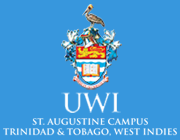PHYS 3152 Advanced Thermodynamics and Solid State Physics
Course Description
The course delivers a comprehensive coverage of the fundamentals of thermodynamics and solid state physics. This course is compulsory for the major in Physics. Through in-class discussions, and problem solving sessions, Students would have an opportunity to improve their ability to reason through challenging situations in the physical Universe using basic principles to develop appropriate solutions. Assessment and evaluation is done in the form of in-course tests and a Final examination.
CONTENT
Solid State: Crystallography: Basic concepts; space lattices; crystal structures; crystallographic planes/directions; crystal diffraction; Bragg’s law. Crystallography: Basic concepts; space lattices; crystal structures; crystallographic planes/directions; crystal diffraction; Bragg’s law. Crystallography: Basic concepts; space lattices; crystal structures; crystallographic planes/directions; crystal diffraction; Bragg’s law. The structure factor and the atomic scattering power. The structure factor and the atomic scattering power. Superconductivity: critical temperature; Meissner effect; critical magnetic field; Type I and Type II superconductors; BCS theory, London equation; Josephson junction, Free electron theory: Assumptions; Energy levels; Fermi Energy; Fermi wave vector; density of states. Energy band theory: energy bands/gaps; Brillouin zones; metals, semi-metals, insulators; equation of motion and effective mass electron in a crystal.
Thermodynamics: Introduction, review of concepts, work processes, First Law of Thermodynamics, concept of internal energy. Thermodynamic processes – free expansion, Ideal gas, Second Law of Thermodynamics. Engines and Cycles: Internal combustion engine, Air standard Otto cycle, Idealized gasoline engine, diesel engine. Stirling and Brayton Engines and Cycles: Carnot engine and cycle refrigerator and heat pump. Entropy, Thermodynamic potentials, Maxwell’s equations.
GOALS/AIMS
- To enable students to develop a good understanding of the concepts and applications of thermodynamics and solid state physics required for more advanced studies in Physics.
- To produce graduates with good critical thinking and problem solving skills that will enable them to apply concepts in thermodynamics and solid state physics to the study and analysis of phenomena in Pure and Applied Physics.
LEARNING OUTCOMES
After successfully completing this course, students should be able to:
- Apply concepts and principles to the study and analysis of phenomena in Pure and Applied Physics.
- Analyze and organize information
- Communicate ideas and information
- Apply mathematical ideas and techniques
- Solve problems in Thermodynamics and Solid State Physics






